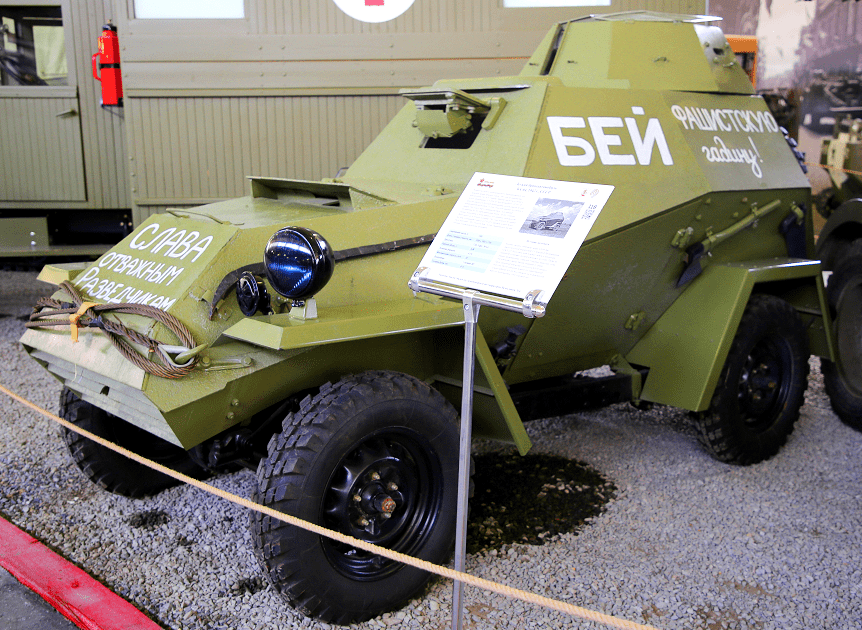BA-64
The BA-64 (БА-64, from Russian: Бронированный Автотовил, Bronirovaniy Avtomobil, literally “armoured car”) was a Soviet four-wheeled armoured scout car. Built on the chassis of a GAZ-64 or GAZ-67 jeep, it incorporated a hull loosely modeled after that of the Sd.Kfz. 221.
The BA-64 was developed between July and November 1941 to replace the BA-20 then in service with armoured car units of the Red Army. Cheap and exceptionally reliable, it would later become the most common Soviet wheeled armoured fighting vehicle to enter service during World War II, with over 9,000 being manufactured before production ended.
The BA-64 represented an important watershed in Soviet armoured car technology, as its multi-faceted hull gave its crew superior protection from small arms fire and shell fragments than the BA-20. BA-64s also possessed a much higher power-to-weight ratio and the placement of their wheels at the extreme corners of the chassis resulted in exceptional manoeuvrability. Following the adoption of the BTR-40, the Soviet government retired its remaining fleet of BA-64s and exported them as military aid to various nations. In East German service, they served as the basis for the later Garant 30k SK-1. North Korean BA-64s saw action against the United Nations Command during the Korean War.
Made in the USSR in 1942
Crew: 2 persons
Engine: GAZ (4 cylinders)
Power: 54 HP
Armor: 12 mm
Speed: 80 km/h
Armament: chain gun DT
Weight: 1320 kg













